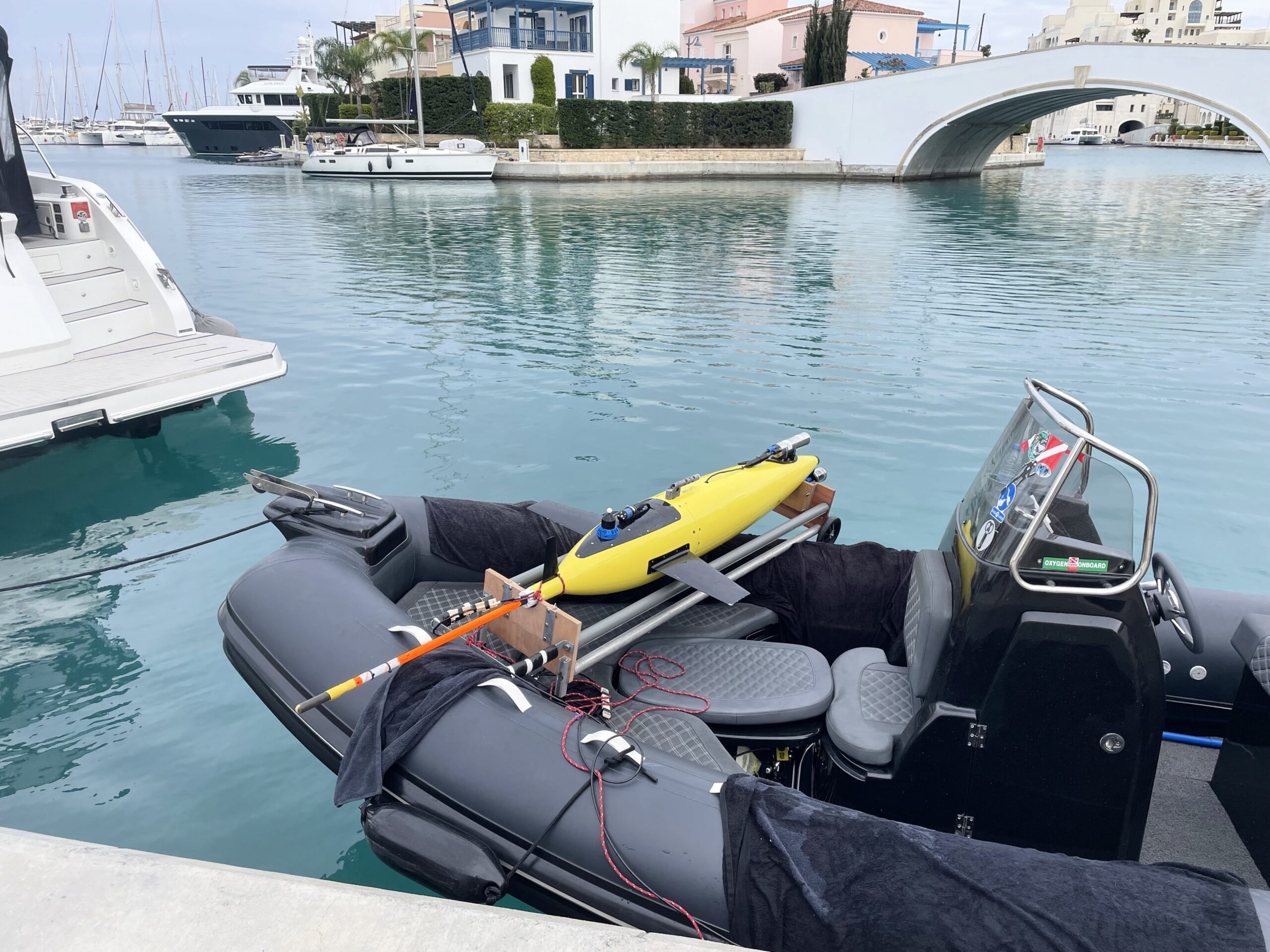Cyprus Subsea continues its mission to develop and support the integration of innovative technologies to Marine Autonomous Systems (MAS) to service the Blue Economy and promote sustainable environmental monitoring.
Cyprus Subsea partnered with Akvaplan-niva (APN) in Norway, the Atlantic International Research (AIR) Centre in Portugal, Institute of Oceanology of the Polish Academy of Sciences (IOPAN) in Poland, and Alfred Wegener Institute in Germany for the CliN-BluFeed Project.
A low-CO2 smart autonomous multiplatform system to monitor and forecast Calanus finmarchicus stock – a new sustainable climate-neutral blue fish feed. Project is a four year long project funded by the Horizon Europe, Sustainable Blue Economy Partnership (SBEP).
CliN-BluFeed Project Site
As the CliN-BluFeed Project enters into its second year, Cyprus Subsea integrated a Hydroptic Underwater Vision Profiler (UVP6-LP) as well as a PAR (Photosynthetically Active Radiation) sensor onto an M1 Seaglider.
In addition to the various sensors collecting conductivity, temperature, pressure, dissolved oxygen, and backscattering (turbidity) measurements, Cyprus Subsea integrated the PAR sensor to measure photosynthetic light levels in water. The radiation available in the are will be linked to the production of phytoplankton from the optical sensor as well as zooplankton information from the UVP system. The combination of these sensors will provide an overview of the food web and the structure of the planktonic populations.
The UVP system has been in development since the 1980’s, resulting in a uniquely intercalibrated camera sensor that can be integrated to autonomous and cabled platforms. It utilizes computerized optical technology with custom lighting to acquire digital images of zooplankton in situ down to depths of 6000m.
Moreover, the Hydroptic UVP system is designed to study large (>100 µm) particles and zooplankton simultaneously and quantify them in a known volume of water. In particular, the UVP6-LP version operates at low speed and with limited space and low power vectors. It provides a high resolution of 5 megapixels. The UVP6 acquires only in-focus images in a volume of water delimited by a single red flashing light illuminating a volume of 0.65 Litre.
In addition, the UVP6-LP can transmit real time particle abundances and records vignettes of selected organisms and large aggregates. Cyprus Subsea integrated a smart processing unit to transmit data through the Seaglider and Iridium satellite network to a basestation on land. These datasets include embedded classification of the UVP6 images.
Refurbishing Seaglider & Sensor Integrations
During the integration, engineers took this opportunity to upgrade the Seaglider’s hardware & software – from a new mainboard to new internal ribbon power and data cables to updated firmware and sensor recalibrations.
Cyprus Subsea conducted a number of ballasting sessions at sea to validate the customized syntactic foam fabrication to account for the new sensor suite. These sessions also provided an opportunity to test the newly fabricated & anodized aluminum bracket for the UVP6.



Seaglider Sea Test & Shipping to Norway



Seaglider SG152 with the newly integrated sensor suite is on its way to Norway where it will take part in the CliN-BluFeed Project’s data collection mission during the spring bloom. During this time, Calanus finmarchicus abundance peaks, making it suitable for harvesting efforts.
Cyprus Subsea and our project partners are harnessing the potential of cutting-edge, autonomous marine monitoring technologies coupled with remote sensing, artificial intelligence (AI), simulation modelling, and experimental investigations.
CliN-BluFeed partners will develop methodologies to advance the Norwegian Sea Calanus fishery as a climate-neutral blue resource for the aquaculture industry, by raising the Technology Readiness Level to TRL8 under operational conditions and extended deployments.

